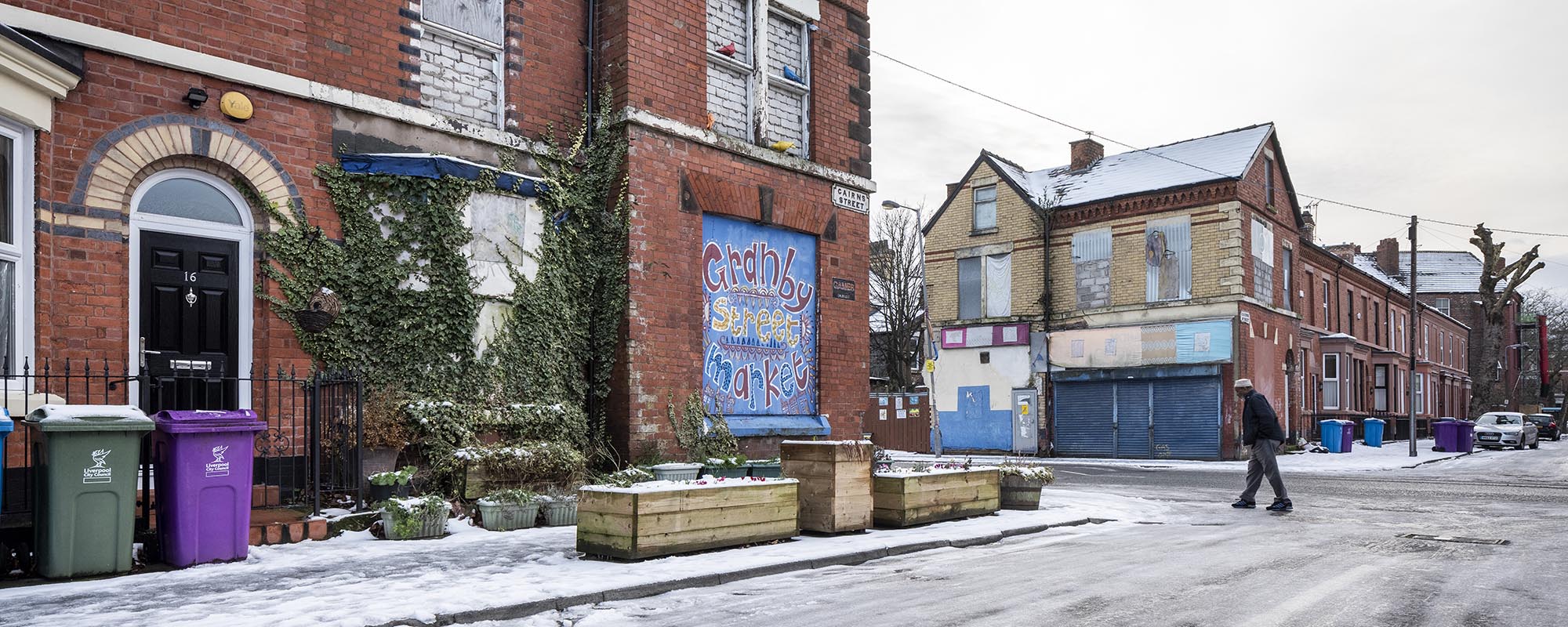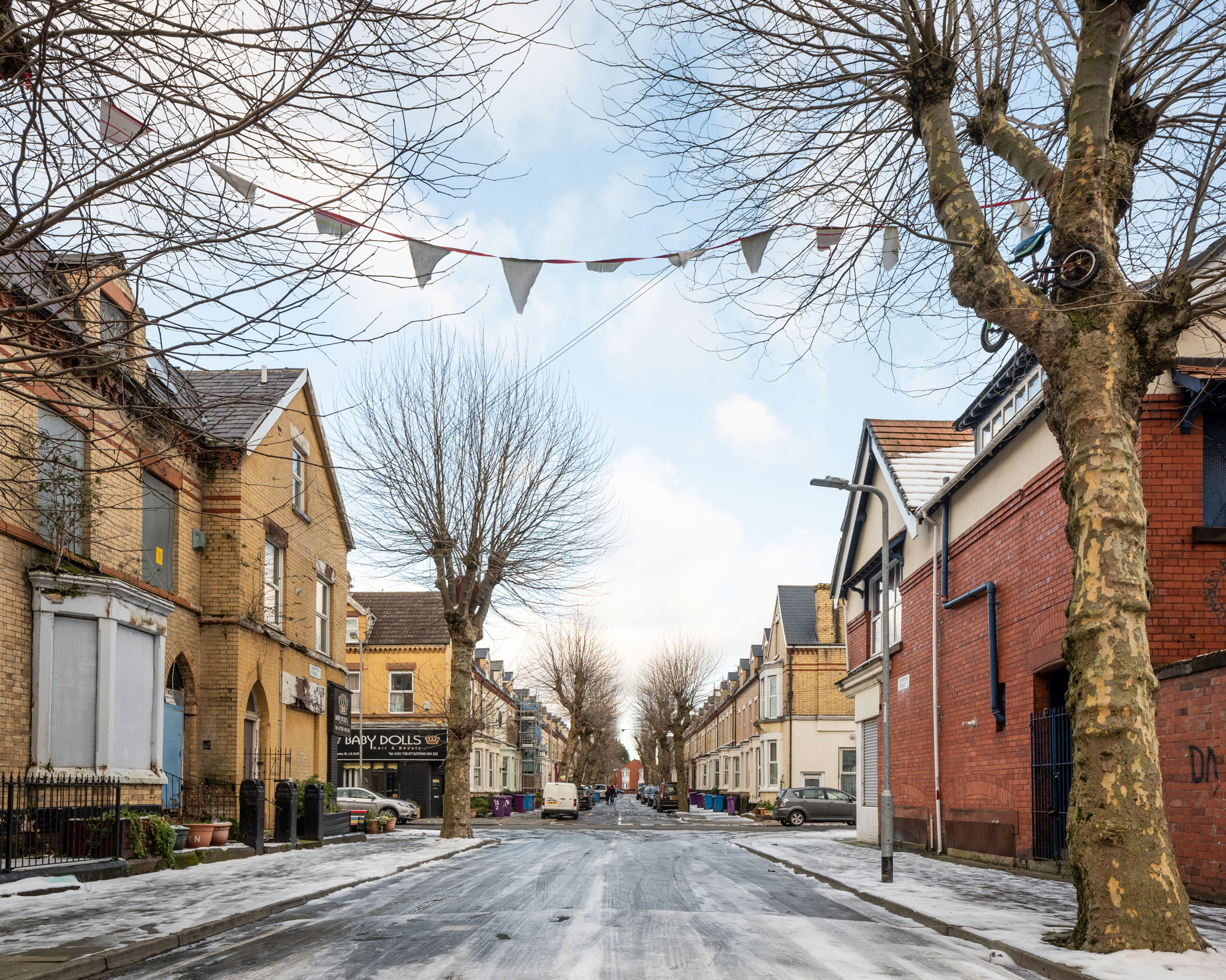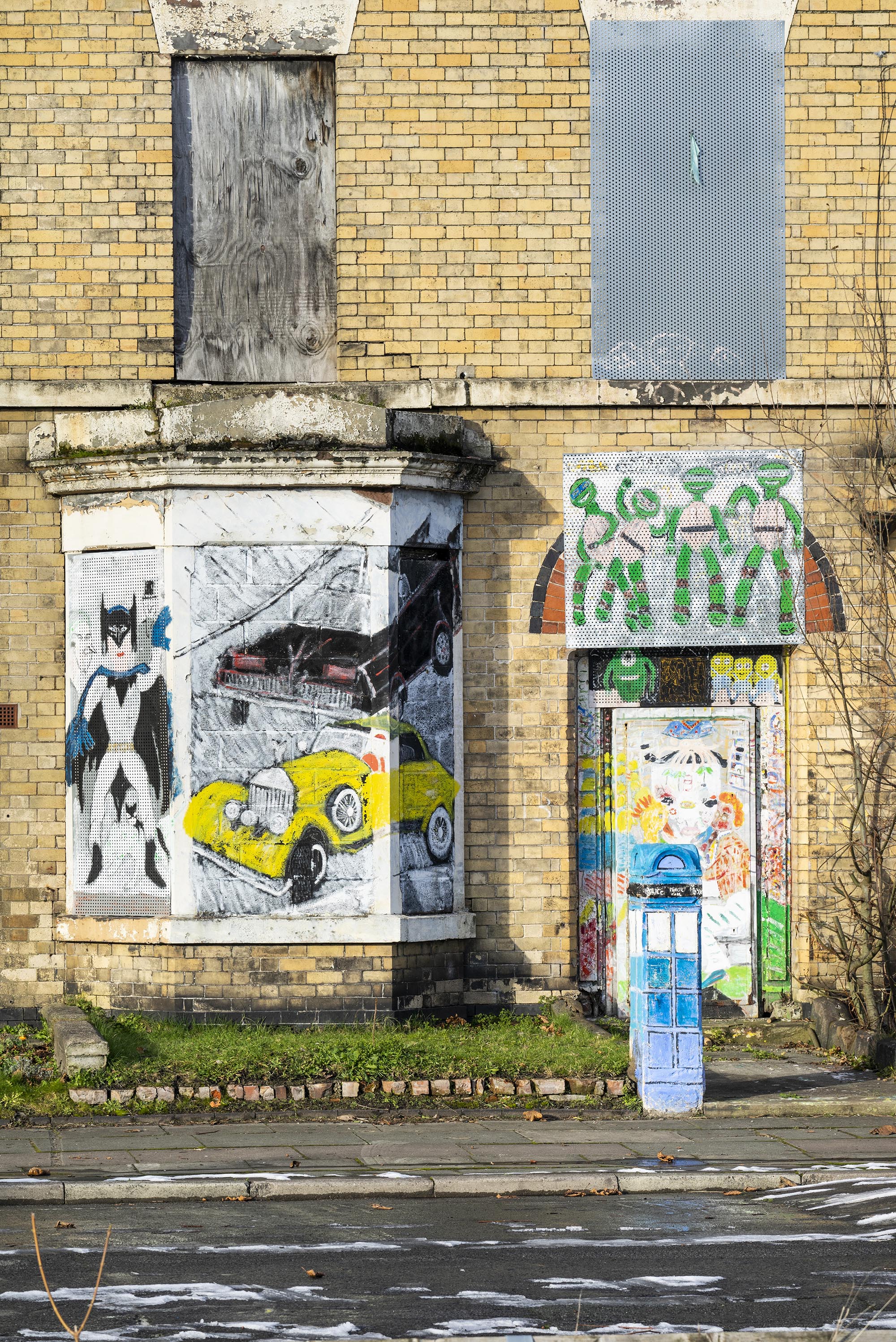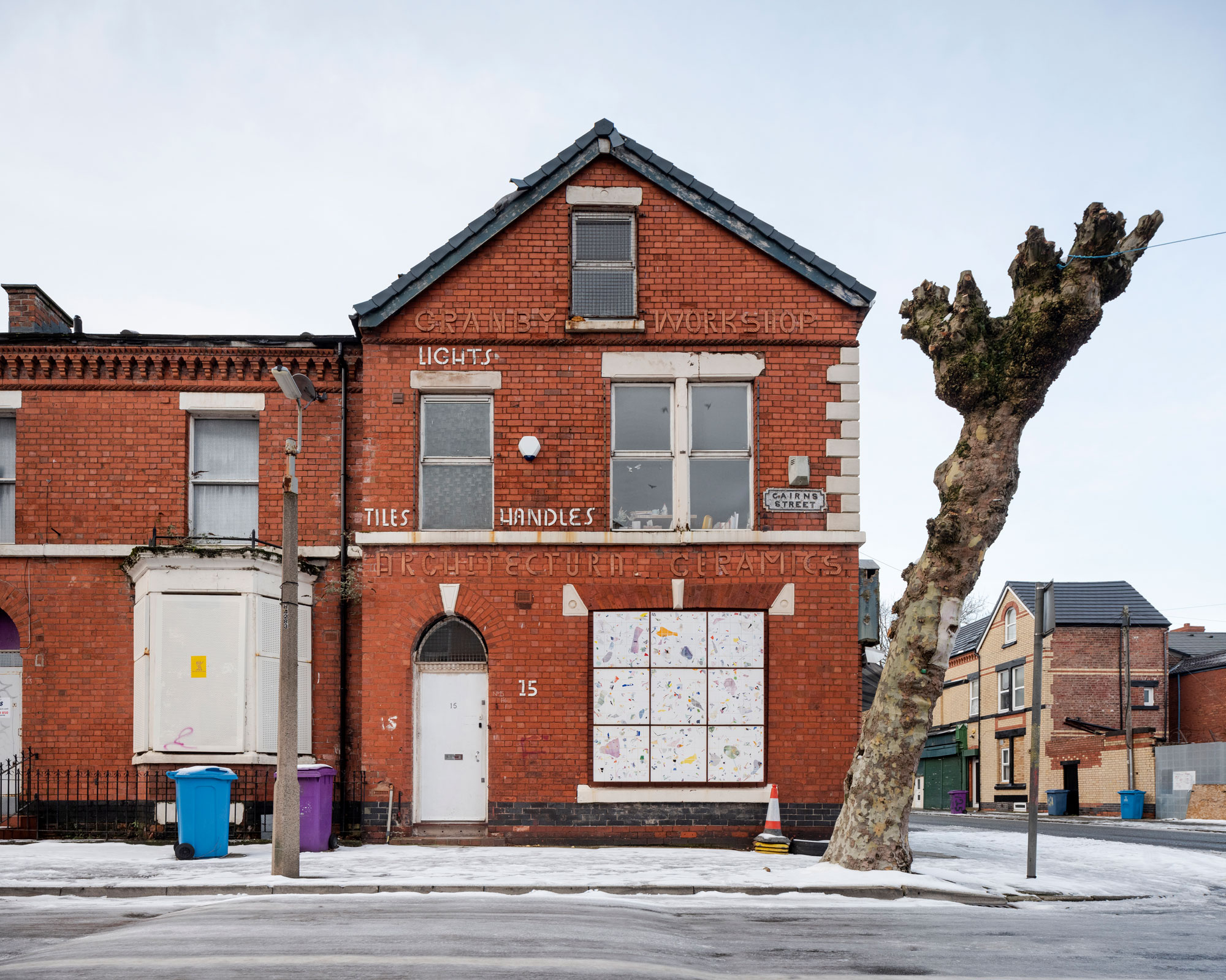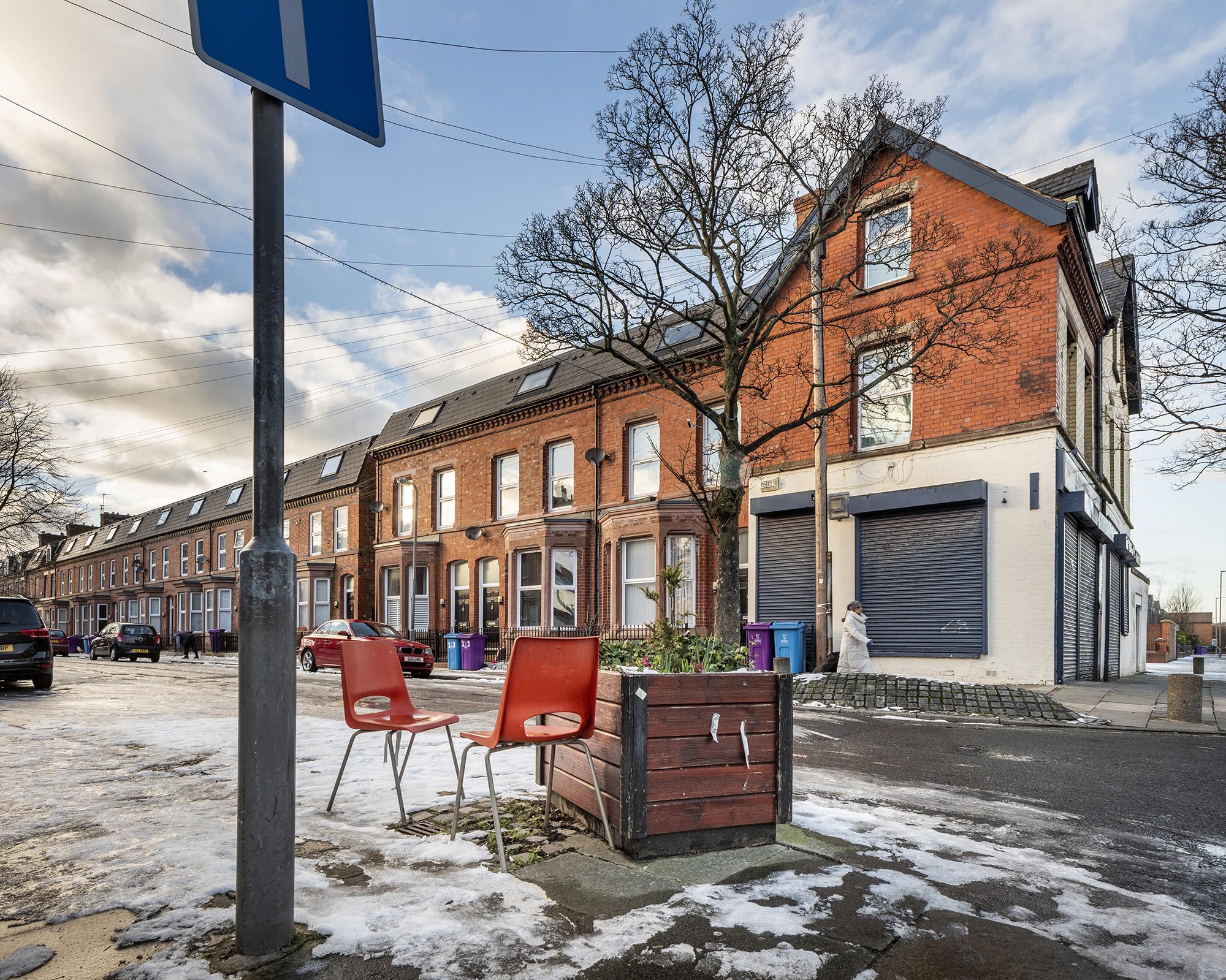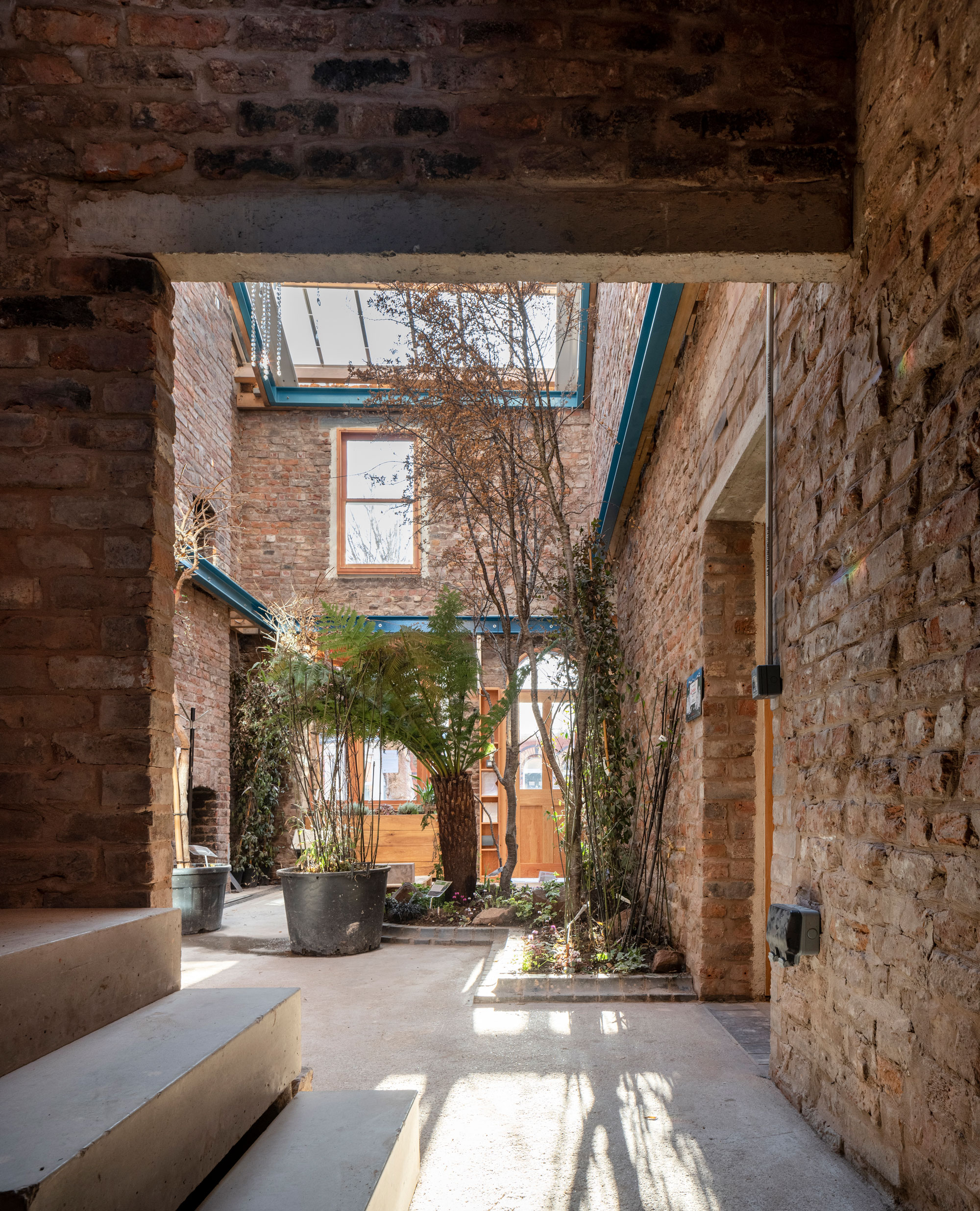Get updates from The Developer straight to your inbox Yes, please!
Granby Four Streets is not a rags-to-riches fairytale
This Liverpool community survived managed decline and painstakingly made their streets a vibrant place to live. Anna Wood reports with photography by Anthony Coleman
It is tempting to see Granby Four Streets as a rags-to-riches fairytale – complete with a surprise Turner Prize win. But the reality is a much longer story of placemaking.
Even 25 years ago, Granby Street in Liverpool was a commercial and social hub. It was a working-class area, and one of the most ethnically and racially diverse in the country, full of shops, people and bustle. There was poverty and overcrowding, but there was also life, business, schools, work and play.
“It was a vibrant place,” says Tahir Chaudhary, who still worships at the nearby mosque and who owned a grocery on Granby Street during the 1980s. “People would come from surrounding areas to shop here. There were problems, but we never had an alarm in the shop, we never had a break-in.”
However, decades of neglect and discrimination took their toll. By the late 1960s, there was serious and widespread concern about living conditions in the area.
When you hear someone talk about a “no-go area”, there’s always more to the story: there are people living, working and playing there
Ronnie Hughes, a local writer and community facilitator who worked for Liverpool Housing in the 1970s, recalls 11 families living in one terraced house. Housing charity Shelter sent photographer Nick Hedges to document the overcrowding and set up a campaign to address it.
Local and national authorities encouraged the area into decay: Granby Street once led straight into Liverpool city centre but that route was blocked; houses were emptied of families and entire streets were demolished.
The whole of Toxteth became known for the ‘managed decline’ and disinvestment it suffered, most acutely under the Thatcher government and the local Labour council during the 1980s, as well as for the civil unrest that saw violent fighting between police and local protesters in 1981.
But when you hear someone talk about a “no-go area”, there’s always more to the story: there are people who are going there, living, working and playing there. It’s worth asking what they think of their neighbourhood and what they want to do with it.
“Granby fell apart organically. It was taken apart in a very piecemeal way,” says Hazel Tilley, who has lived in the area since she was 16. “Then we started to build it up organically, with the residents’ association, with the gardening group, then the market. So when the council stopped fighting, because they had no more money and because the law changed, we were able to put our head above the parapet and say, ‘We’ve always been here – come and have a look.’”
People really started to take notice when Granby won the Turner Prize in 2015 – or rather when London architecture collective Assemble won for its work on several derelict terraced houses in Granby’s Cairns Street, bought for £1 each from the local authorities by the community land trust Granby Four Streets Community Land Trust (CLT).
“I can’t tell you how much working with Assemble has taught me,” says Tilley, who is a member of the CLT’s board. “They were so young and so new to the game when they met us, and they came up with stuff that was unbelievably great. They are beyond wonderful.”
“Granby fell apart organically, it was taken apart in a very piecemeal way. Then we started to build it up organically, with the residents association, with the gardening group, then the market”
The Turner Prize win was the highest-profile chapter in a long story of how the place has not just survived – the streets are warm and friendly, quiet but not deserted, even on a cold winter afternoon.
“Nothing we do is secret,” says Tilley. “It’s all there on the website, all our plans, the drawings by Assemble, the finances, how we manage our properties – it’s all open to public scrutiny.”
Tilley has been pivotal in the history of these streets, along with Eleanor Lee and other local women from the residents’ association who fought to save these terraces from demolition in the 1990s, right through to the ongoing plans and daydreams. The CLT is relatively recent – it formed in 2011 – and it coalesced from grassroots organising.
“We did a lot with very little,” says Lee. “We cleaned up more cat shit than you can imagine, we hassled the council, we cleaned rubbish out, we painted where they’d tinned up houses. We worked hard.”
Granby Street Market is a beloved monthly fixture that began as a one-man boot sale; the gardening group started when Lee began digging flowerbeds out of the tarmac in her semi-derelict street – Granby is now one of the cleanest and greenest areas of the city.
Nasra Elliott was born in Toxteth and moved into Cairns Street three years ago. She and her four-year-old daughter were officially homeless, and got help from the local Steve Biko Housing Association. Her house is one of several remodelled by Assemble: “When I opened the front door, I just thought, ‘Oh my God, this is amazing!’ I took it on the spot. My daughter seemed really comfortable and happy as soon as she walked in – she went over and kissed the wall!”
Elliott is now on the board of the CLT and she shares the can-do approach. “You have to be determined,” she says. “Things can be done, you can work around things, you can learn how to fundraise, you can get everyone you know involved. It’s about looking around and thinking, ‘That doesn’t look good. I want that cleaning up. We could do with such-and-such here. We need these amenities. What can we do about that?’”
“There’s a big drive [by planners] towards ‘community hubs’ at the moment,” says Tilley. “But they already exist and they’d know that if only they’d spend 12 months with the people they want to influence. Our monthly market has been going for more than 10 years and our gardening group started 14 years ago – they are fantastic community hubs.”
Perhaps the most remarkable place in these streets is the Winter Garden. Two derelict houses on Cairns Street have been knocked into one and turned into a leafy oasis
“Everyone knows everyone here,” says Elliott, who stops to talk on her way to university. She’s lived on a neighbouring street all her life and has noticed the changes over the past few years: “It was dull, old and neglected, and now it feels like it’s coming together.”
There’s an easy pride and openness when Elliott talks about her neighbourhood. She lists even more community hubs, although she doesn’t call them that: the Somali Centre and the Methodist Centre, where there’s a youth club and schoolchildren can get extra tuition. “Toxteth hasn’t got a great reputation but I do feel safe. I’ve never come across any harm or any discrimination – I’ve got Chinese neighbours, Muslim neighbours, Christian neighbours.”
Perhaps the most remarkable place in these streets is the Winter Garden. Two of the £1 derelict houses on Cairns Street have been knocked into one building and are being turned into a leafy oasis. There is something dreamlike and fantastic about the trees flourishing inside this terrace and reaching up towards its glass roof – it may be Assemble’s greatest achievement yet. And it’s another community hub, too, of course: there will be an arts centre here, a cafe and perhaps some accommodation.
What the Winter Garden will be used for, what art will be in there, who will be the artists-in-residence, how it will be funded, who will open the doors in the morning and lock them at night – it is all decided by consensus, by the people in Granby and the surrounding areas. The CLT board put up posters and pictures of what they have planned, and they run stalls at the market every month and suppers at the Methodist Centre where they are available to talk, listen and be held accountable. In the summer, they sit out in the street with posters, squash and biscuits, and consult with dozens of people.
The plans for development here are literally endless – they’re never fixed; they shift and develop and are open to influence from a wide range of stakeholders, collaborators and participants.
The CLT doesn’t own that many properties here – it had to sell some of its 13 houses to pay off loans – but it has been instrumental in bringing housing associations and other developers back into the area. Some of those developers will use CLT covenants, which keep land in community ownership and ensure properties remain affordable in perpetuity; others will not.
Meanwhile, the CLT is acquiring three empty shops from the council, which it plans to turn into a café and other businesses still to be decided, with a flat above each. The possibilities and the people ebb and flow – there is a consistency and there’s also an openness to new ideas.
There are no borders, no clear lines between Granby and the neighbouring streets, and the consensus-building and consultations include people from the wider area. Having been left out and left behind for decades, the CLT know it is important to spread beyond their four streets and invite people in. “A lot of people have the impression that it’s just three or four streets,” says Elliott. “And that’s stopped people getting involved. It needs to be about Granby and the whole of Toxteth, because it needs to benefit the whole area.”
There are no borders, no clear lines between Granby and the neighbouring streets, and the consensus-building and consultations include people from the wider area
The board of Granby Four Streets CLT includes homeowners, CLT tenants, housing association tenants, people who’ve been involved for decades, those who’ve been involved since the CLT was formed, and younger people who’ve recently moved into the area, all volunteers.
It’s unusual, perhaps, for newcomers to become part of the local polity so quickly, and it shows an investment on their part and an openness on the part of the locals. That same attitude is forming new networks throughout the region and the country.
“We need to work across organisations,” adds Elliott. “If we’re all doing things separately, that’s all well and good, but it’s better if we communicate, even if we just meet up quarterly.” The CLT is already teaching, talking and meeting across the UK, with women’s forums, housing associations, university students and other CLTs.
What’s clear is that it works. So why isn’t everybody doing it? “We didn’t know enough to know we couldn’t do it. We used our common sense and, without realising it, we’ve done things for the first time,” says Tilley.
There’s no sense that Granby is ever going to be finished or perfected – there are still those shops to reopen, plans for the cafe, for street parties and sound systems, summer schools, day trips, poetry events, maybe a local newspaper. This is a living place with a history that stretches way back and a community that is organising way into the future. And there are still houses standing empty, in a city where hundreds of people are without homes. Granby needs more funding, more investment, more plans; other developers are moving in, with varying degrees of success.
The CLT is not a profit-making venture and it doesn’t want to be, although it has attracted £22m in funding so far. “We understand money for what it can do,” says Tilley. “We’re not interested in making profit; we don’t want to make money for stocks and shares or for more property. We want to break even and be self-sustaining, and if we make money, we plough it back into the community.”
There’s no sense that Granby is ever going to be finished or perfected – there are still those shops to reopen, plans for the cafe, maybe a local newspaper
They have certainly mastered sustainability. The CLT is daydreaming of reed bed filtration, looking at solar panels and considering new ‘solar flowers’ – machines that direct their panels toward the sun and close up at night. One day, these may be installed in Granby, gathering more power for the community.
The CLT knows that the work of a community is only sustainable if the people who live there have a real say in what happens, and if they’re in it for the long haul.
“The satisfaction is priceless,” says Elliott. “It’s about loving the area, loving yourself and loving the community that you’re in.”
Find out more
www.granby4streetsclt.co.uk
Anna Wood writes about music, sex and politics for publications including Mojo and The Quietus
Sign up to our newsletter
Get updates from The Developer straight to your inbox
Thanks to our organisation members
© Festival of Place - Tweak Ltd., 124 City Road, London, EC1V 2NX. Tel: 020 3326 7238
